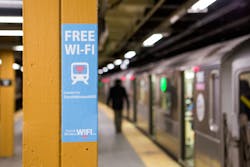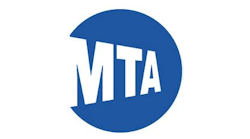Public-private partnerships (P3’s) are an asset to public transportation agencies. One of the most beneficial aspects is the ability for agencies to shift certain financial and construction risks to private companies. P3’s have the ability to utilize funding and grants from both regional and local transportation authorities – the process of P3’s can provide a greater level of investment benefits. P3’s can also be utilized in a number of different applications; including design/build, implementation of passenger services and technologies.
A Department of Transportation spokesperson stated; “While public private partnerships may not work for every rail project, they can provide projects with increased flexibility and capital, accelerated project delivery and more access to innovation.”
When it comes to a successful rail P3 partnership, companies like Transit Wireless and Transdev stress the factor that their company is in it for the long-haul. Once Transit Wireless takes on a project the company works to form a tight partnership, from management to profitability.
Determining Different Rail Needs
“It starts with understanding the goals, roles and responsibilities of what the agency is looking for. What type of services do they need to support ridership? What type of services do they need to support public safety? What type of services do they need to support the business of running the transit authority? Be it operational, maintenance, internal communication or enterprise asset management — once we understand the goals, objectives and timing that they are looking to achieve, these services all get rolled into a license agreement,” Transit Wireless CEO Bill Bayne explained. “The license agreement really becomes the charter for the partnership between Transit Wireless and the agency.”
Scott Hagen, communications manager, Transdev said that the earlier that Transdev is able to begin forming that partnership, the better. "Often what we’re responding to is a vision that they already have. The earlier that Transdev is involved in the process, the better the outcome is going to be. We can take that worldwide expertise and experience and recommendations and suggestions to work with each customer to help them understand that the decision they make early in the process effects."
When it comes to rail projects, it’s clear that each one has hurdles that need to be overcome. Most systems also face different requirements; may it be the construction, city structure or just the span of the rail lines. The importance when selecting and forming a successful P3 relationship is a company that can understand and address those needs directly.
Transdev has been working with a number of different cities on streetcar lines — including the upcoming Milwaukee Streetcar. “There is this North American renaissance with streetcars and we’ve seen that (some agencies) think that streetcar operations are similar to bus operations. They’re two completely separate services, with two completely separate challenges and opportunities."
Transit Wireless recently undertook a project within New York's subway lines. “The New York City transit environment versus another metro has completely different constraints on space, environmental concerns and access by the public,” said Bayne. “We work with the internal departments of the agencies to really define those design, mechanical and environmental constraints. That leads to a network architecture that A. meets all of those service requirements and B. is tailored and customized to fit that environment.”
When it comes to P3’s Transit Wireless takes both the financial and capital risk, allowing for the agency to stretch their budget further to address other areas of need. When it came to the New York subway, the Transit Wireless partnership also benefited its network partners – offering services from AT&T, Sprint, T-Mobile and Verizon.
Bringing Accessible Technologies to New York Riders
Offering increased accessibility to riders can often increase ridership on rail lines. Transit Wireless recently acquired a 27 year exclusive license to design, build, own, operate and develop business on a broadband wireless network on the Metropolitan Transportation Authority’s underground stations in New York City.
“There are 282 stations today, and we are required to build with what we call a neutral host network – it [a neutral host network] is a network that provisions all wireless spectrums used by the national carriers, a public safety spectrum and private Wi-Fi that is owned by the New York City Transit Authority for their internal communications. We essentially build a neutral host environment and deploy all services and then pursue partners to extend their services out to the public or to employees,” explained Bayne.
Bayne said that Transit Wireless takes on the financing risk, schedule risk, and the business development risk and once the system goes live Transit Wireless operates it.
“As we recover our investment we share net profits 50/50 with the transit authority. As we commission a station, on a station-by-station basis, we have commission services,” said Bayne. “We pay a minimum revenue per month to the transit authority. If for some reason we don’t develop any partnerships on the network, we still will have to pay the transit authority a minimum revenue payment across every station as services are provisioned.”
Bayne explained that both the agency and Transit Wireless work directly in a partnership for the length of the contract – benefiting each other.
Overcoming Challenges
When entering into P3 contracts, each rail situation raises different challenges.
“There’s always challenges with each new or existing service, but there are opportunities as well,” said Hagen. “One of the challenges is overcoming the perception that all we are capable of our operations. Our depths of knowledge around rail projects goes beyond rail operations.”
“Within the New York subway network, no two stations are alike,” explained Bayne. “We have a general architectural approach and we understand the service and quality requirements, but every single station requires a customized design to avoid existing infrastructure.”
The P3 partnership with MTA and Transit Wireless is beneficial for both the agency and the company.
“As we look across the transit industry, these are very complex and maintenance intensive businesses. New York is a 110-115 year–old system. It requires a huge amount of capital to maintain and a huge amount of capital to upgrade the services of running the transit authority. There are three main benefits of a P3 in these environments. First, our job is to be the experts in designing, deploying and managing a network. Second, by deploying a neutral host we spend an inordinate time out in the market place working with national wireless carriers or public agencies outside the transit authority>Third is that since they are very old and capital investment networks, we take risk off of budgets and tax payers; agencies can stretch their capital budgets to other projects,” added Bayne.
“Why would you learn how to ride a bike when you can hire a professional cyclist to ride a race for you? There are so many different aspects to running a rail operation; there are little details that aren't even considered when you're deciding to do it yourself or to hire an agency. We would highly recommend that agencies pursuing new rail project or looking to build new lines explore public private partnerships — there are many different aspects and challenges that they might not realize exist," explained Hagen. "That’s why we’re there; to help them, consult and council them and make sure that they understand what they're asking for and what they want to achieve and we can achieve that together.”



